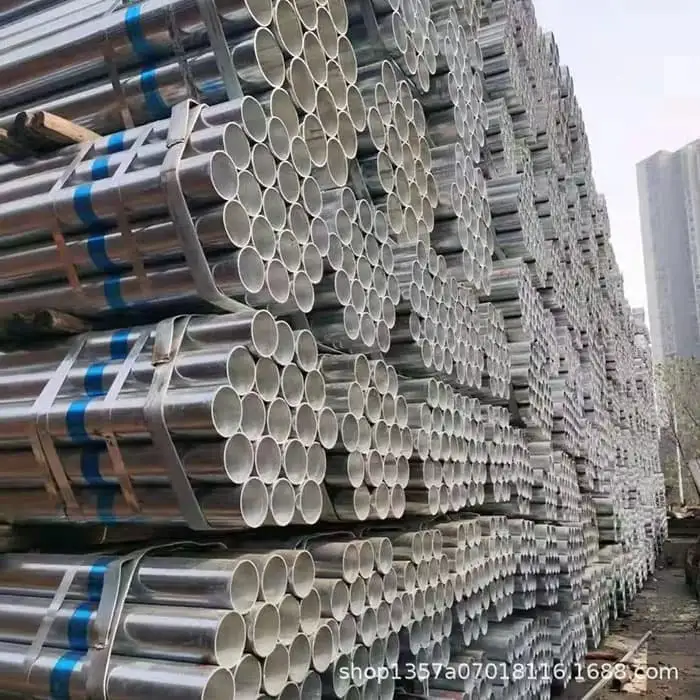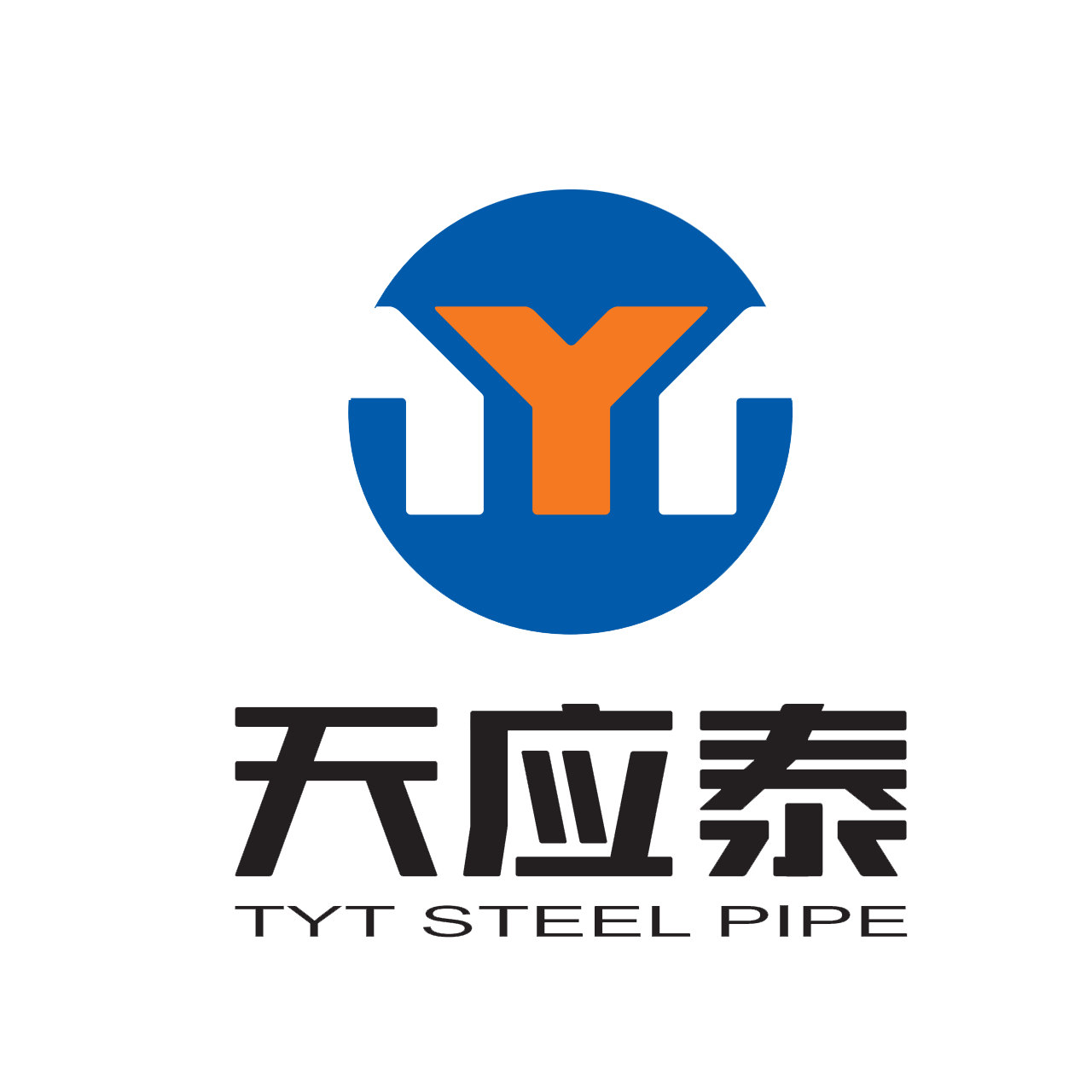Hello, this is Max from TYTSTEEL. You’ve likely encountered galvanized steel pipes, and they’re pretty important fellas in the steel industry. Let’s take a closer look at these tough guys, understand what makes them so special, and why they’re a popular choice for numerous applications.
Unmasking Galvanized Steel Pipes
Imagine a steel pipe, your usual tough-as-nails steel, except it has a protective armor made of zinc. That’s essentially what a galvanized steel pipe is. It’s the trusty steel pipe getting a nice, protective zinc coating that acts as a shield against corrosion. The zinc’s job is simple – it rusts first so that the steel doesn’t have to. There are two types of these galvanized champs: hot dipped galvanized steel pipes and cold galvanized steel pipes.
Why Zinc?
You might be wondering, why zinc? Well, it’s because zinc’s got a knack for resisting oxidation, and it’s more active than steel. Think of it as the front-line soldier taking one for the team. It forms a compact oxide layer that halts oxidation, thus preventing corrosion. Also, if electro-chemical corrosion is ever on the horizon, zinc steps up and takes the hit, saving the underlying steel. This results in a slower corrosion speed and a much more extended lifespan for the steel pipe.
The Roles of Galvanized Steel Pipes
Back in the day, these pipes were the hotshots of coal gas and steam transmission. They even played the role of water pipes, but that didn’t last. Rust started accumulating inside the pipes, turning the water yellow due to iron oxide. Worse still, the corrosion resulted in heavy metals seeping into the water, which was a significant health concern. So, by the 1960s, these pipes were retired from carrying water in developed countries.
The Two Key Types
지금, onto the main types of galvanized steel pipes:
뜨거운 담근 아연 도금 강관:
Imagine dunking the steel pipe into a pool of molten zinc heated to about 500℃. The steel surface gets a solid zinc coating that’s primed for anti-corrosion. A solid choice for heavy-duty applications.

Cold Galvanized Pipe
These pipes get their zinc coating through an electrochemical process. The zinc layer is thinner but still does a decent job against corrosion.

Inside the Hot Dipped Galvanized Steel Pipe World
Hot-dip galvanizing isn’t a new kid on the block. France first introduced it to the industry in 1836, and it’s seen quite a growth spurt since then, especially with the advent of cold-rolled steel. As industries require increasingly high standards for things like transmission and communications, the demand for hot-dip galvanizing has also climbed.
The process of hot-dip galvanizing is like a well-coordinated dance – pickling, washing, plating, drying, hanging plating, cooling, medicating, cleaning, grinding, and finally, achieving the hot galvanized finish. The zinc layer for hot-dipped steel pipes can be as thin as 35μm or as thick as a whopping 650μm. This robust layer forms a solid defense against air corrosion and electrochemical assault.
The zinc layer in hot-dip galvanizing acts like an ongoing cycle of anti-corrosion defense. As the zinc layer interacts with the air, it forms a protective film. Even when this film is destroyed, a new one forms, ensuring continuous protection. And when things get really tough, and the zinc layer takes heavy damage, it kick-starts electrochemical protection, with zinc being the first to dissolve. This shows that hot dipped galvanized steel pipes are like the heavyweights of corrosion resistance when compared to their cold galvanizing counterparts.
Let’s talk about lifespan. These pipes don’t just last a while; they hang in there for the long haul. But, like anything else, their lifespan depends on where they are. If they’re wrestling with heavy industrial conditions, they’ll last about 13 years. If they’re chilling in the ocean environment, they’re good for 50 years. In the suburbs, they’ll hang around for an impressive 104 years, and in cities, you’re looking at a solid 30 years.
Hot-dip galvanizing has a special place in environments that see strong acid or alkali fog. It’s the go-to choice for extremely corrosive conditions. That’s why you’ll find a lot of these pipes in outdoor steel tower constructions.
Cold Galvanized Steel Pipes
On the other side of the spectrum, we have cold galvanized steel pipes, also known as electric galvanized pipes. These get their protective layer of zinc through an electrochemical process. The layer is generally 20~30μm thick, dense, and doesn’t include organic matter.
The production of cold galvanized steel pipes involves degreasing, electroplating, passivation, drying, and packaging. Cold galvanized pipes, with their zinc layer thickness of 5-15μm, are a decent choice, but they don’t measure up to hot-dipped pipes in terms of corrosion resistance.
In fact, many countries have waved goodbye to using cold galvanized steel pipes for water and coal gas transmission due to the thinner zinc layer. However, their smooth finish makes them a good pick for manufacturing small pieces that require precise plating. Think screws, machinery, electronics, precision instruments, and chemicals. They’re also used in transportation, weapons production, aerospace, and atomic energy sectors. They might not be the top choice for pipe products, but they still play a crucial role in the economy.
Sizes and Specs of Galvanized Steel Pipes
These pipes aren’t one-size-fits-all. They come in various sizes, with nominal diameters from 1/2 inch to 4 inches and wall thicknesses from 2.0mm to 4.5mm. When it comes to pressure testing, pipes with diameters from 10.2mm to 168.3mm can handle up to 3 MPa, while pipes from 177.8mm to 323.9mm can take up to 5 MPa.
As a result, you can gain insight into the world of hot-dip galvanized steel pipes. They offer many advantages: excellent corrosion resistance, remarkable service life and versatility across industries. However, always consider the requirements of your specific project to ensure the right fit.
